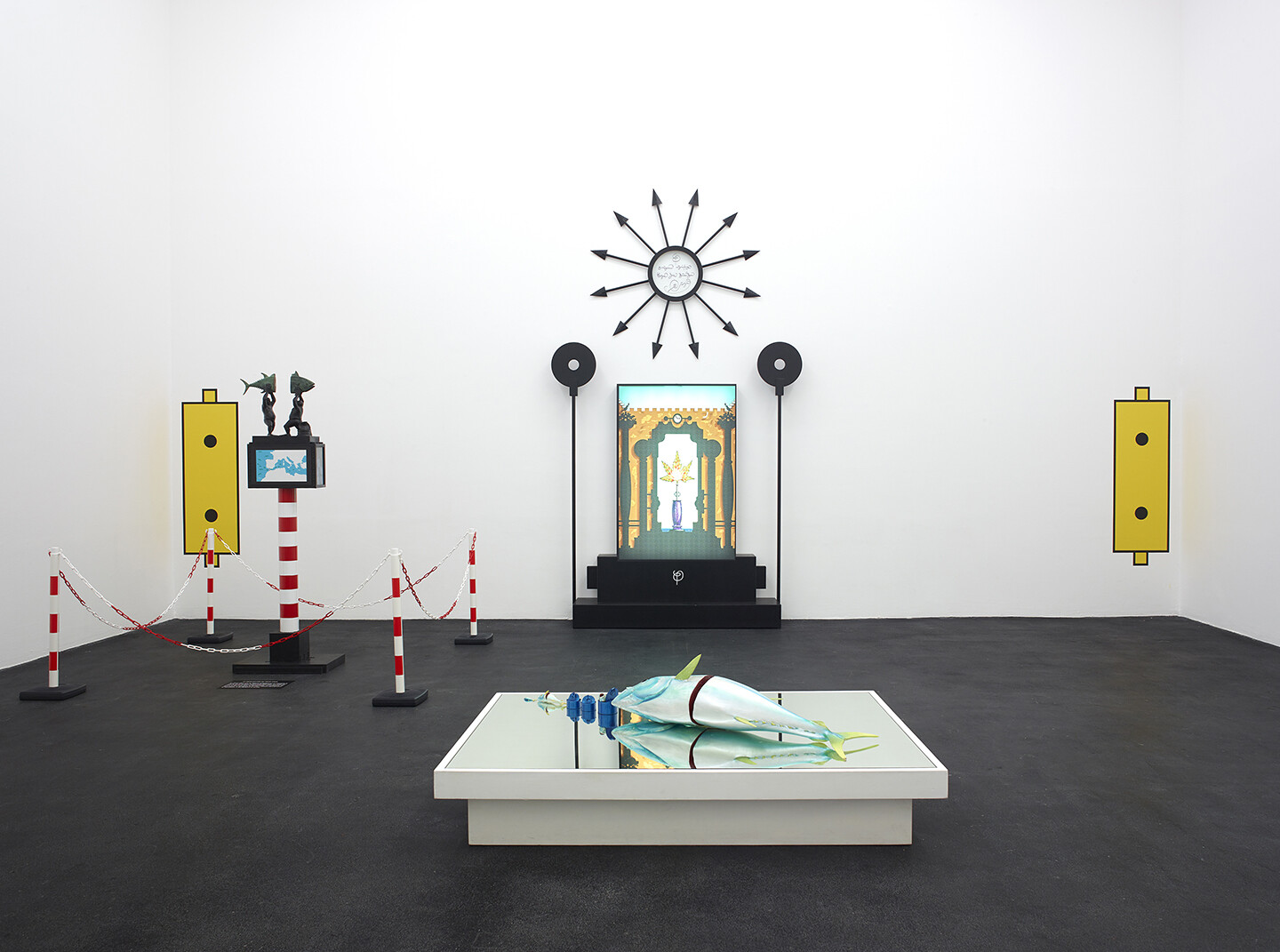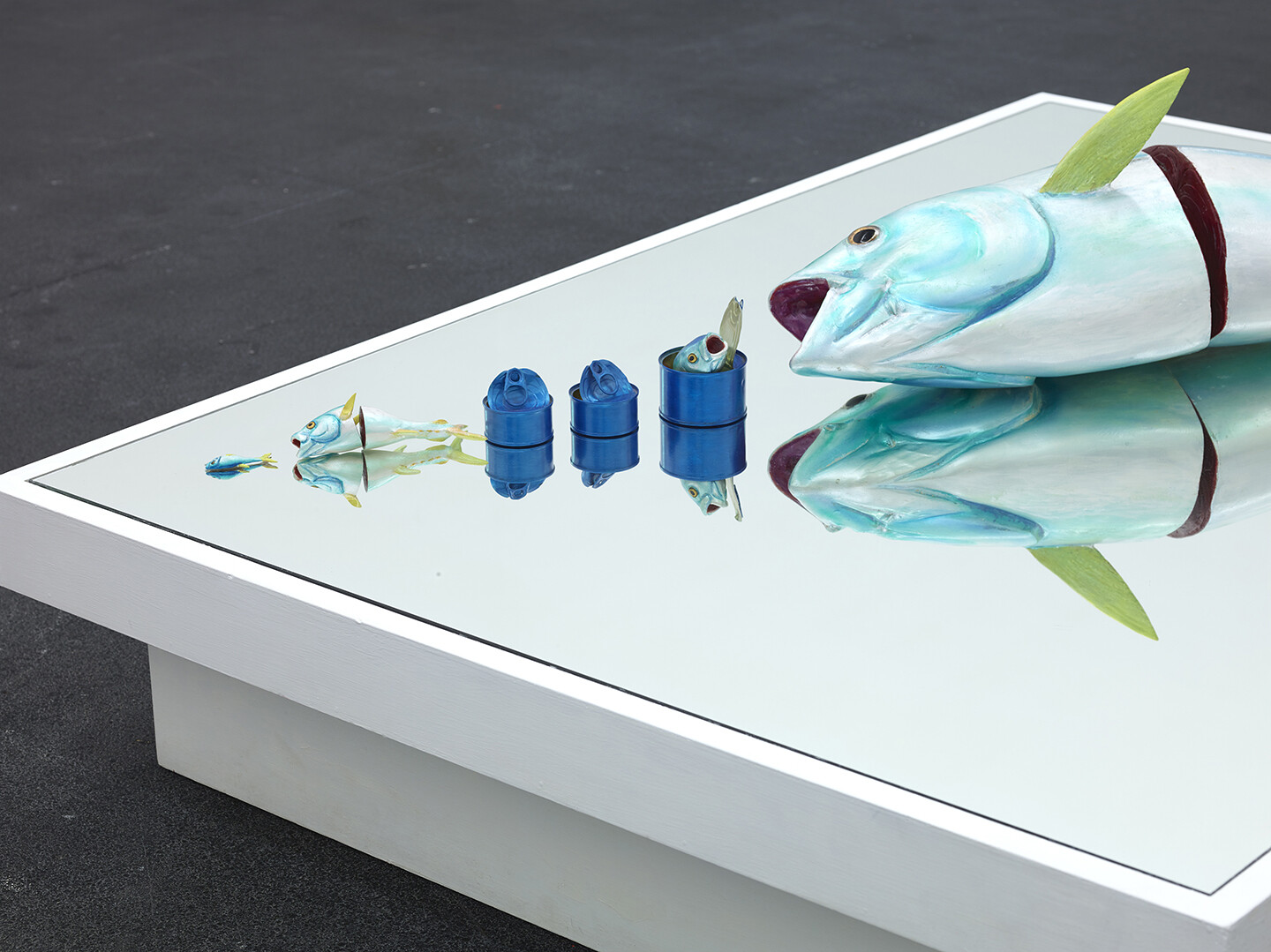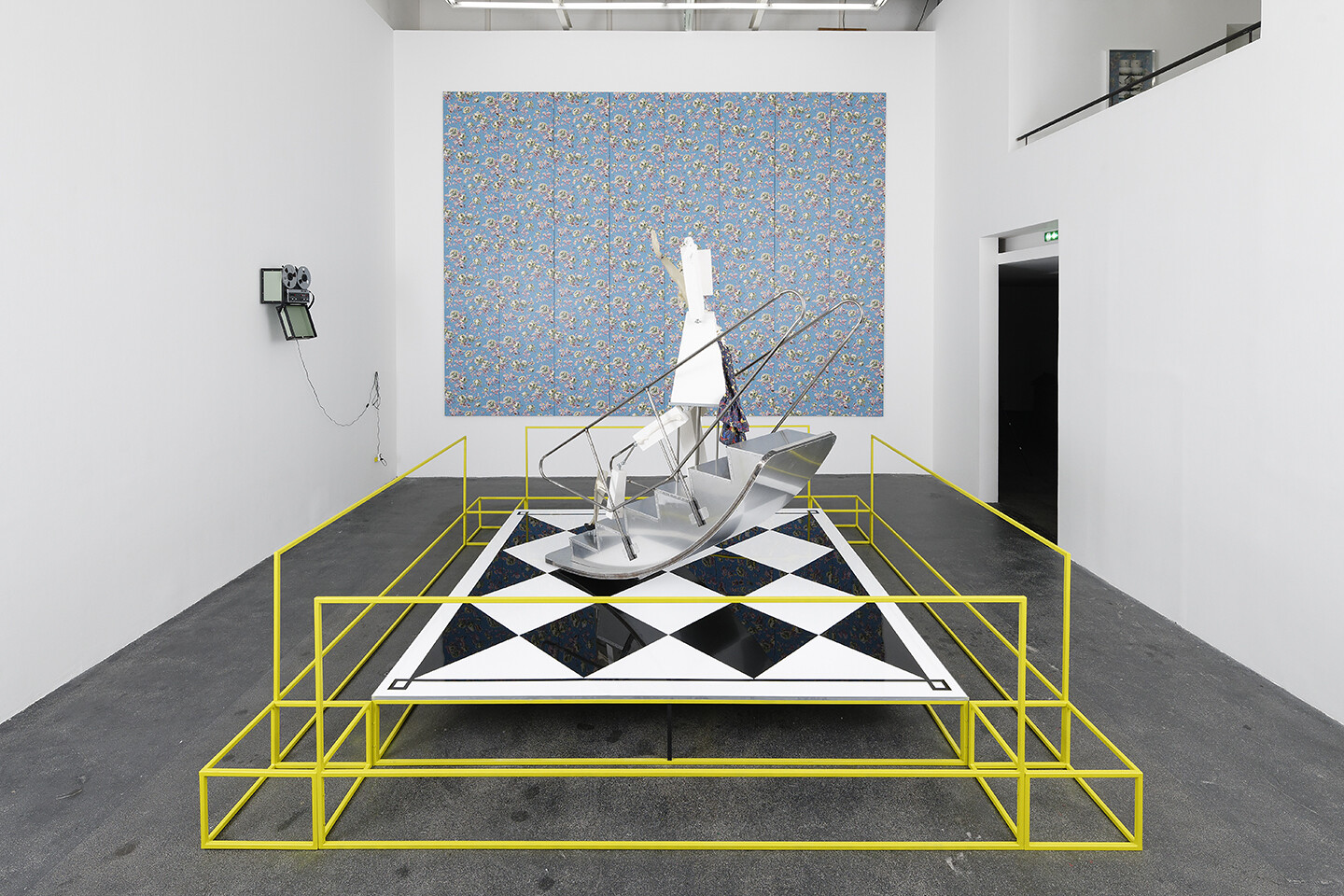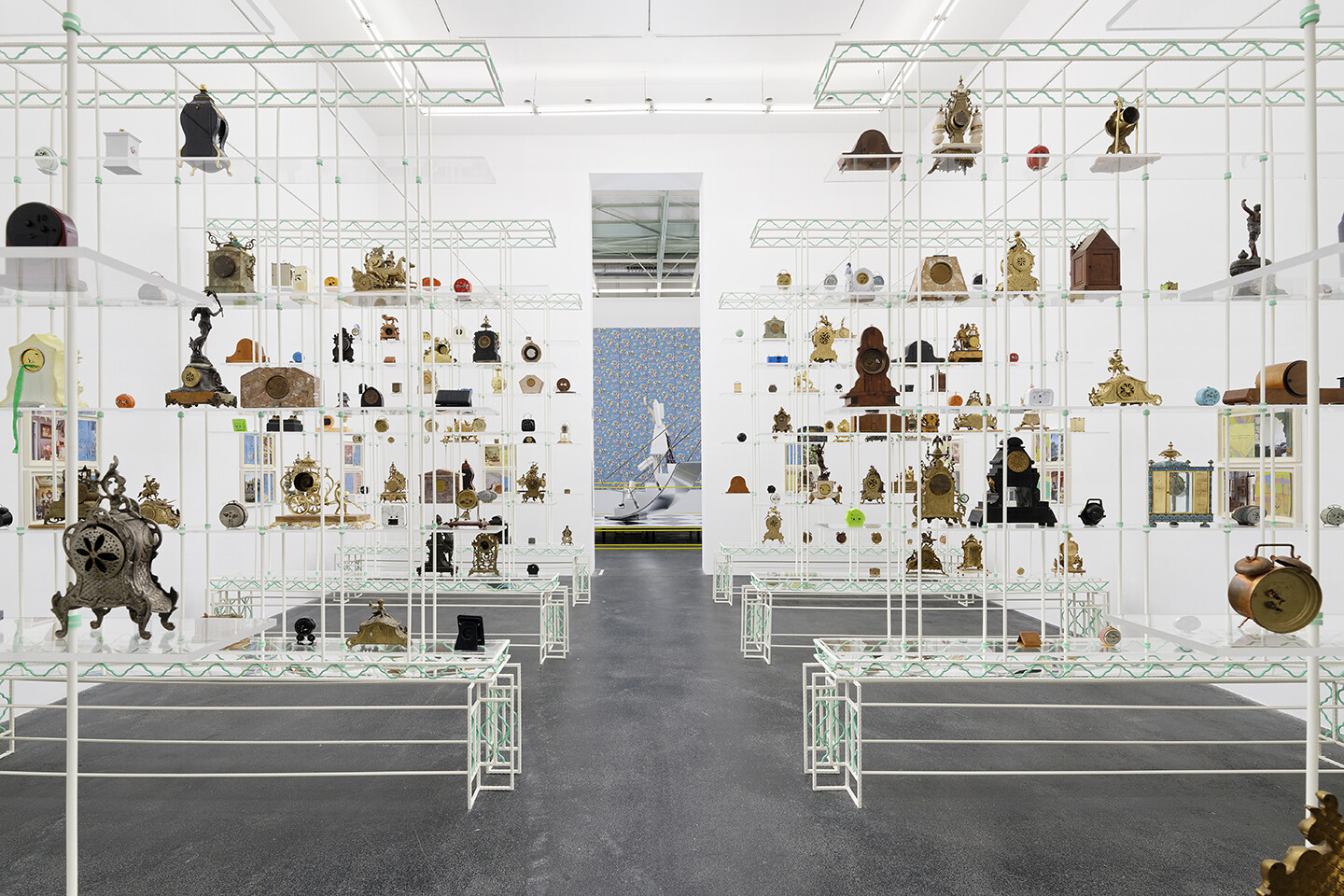Reverse Universe
October 10, 2020–September 5, 2021
26 quai Aspirant Herber
34200 Sète
France
Hours: Wednesday–Monday 12:30–7pm,
Saturday–Sunday 2–7pm
T +33 4 67 74 94 37
crac@laregion.fr
Reverse Universe was born of a reflection on boundaries and going beyond them, on ways of inventing other worlds, other points of view. It is a dual exhibition: that of Luigi Serafini and that of Than Hussein Clark. Each artist offers an unusual vision of the city of Sète, Tangier, intersecting stories, mythical figures, travelling poets, reversed perspectives… both symbolically and politically, through projections and imaginative worlds produced by fascination games on both sides of the Mediterranean. They encourage us to go beyond our fear of what lies ahead, kindling a desire to invent the future.
Luigi Serafini: Sur terre et sur mer avec le Codex Seraphinianus
Between 1976 and 1979, after studying architecture, Luigi Serafini created the Codex Seraphinianus, a masterful work first published in 1981 by Franco Maria Ricci and constantly reprinted since then. A “book of all books,” this encyclopaedia of an invented, surrealist world—heralding a hybrid humanity in which plants, animals and objects combine—is a worldwide bestseller. Going beyond the boundaries of the visible and invisible, mixing illustrations with writing, the book is an inexhaustible source of inspiration. A polymorphous creator, Luigi Serafini collaborated with the Memphis Group, among others. A painter, writer and friend of Fellini, for whom he created the poster for the film La voce della Luna (1990), and the great satrap of the College of ’Pataphysics since 2016, Luigi Serafini is a smuggler between a certain surrealism and Beat Generation poetry, cabinets of curiosities, Proust, Joyce and the contemporary world of social networks. Italo Calvino wrote a preface to the 1984 edition of the Codex, and the cover of Calvino’s book Collection of Sand bears Serafini’s illustration Poissoeil / Fisheye. This fisheye became a favourite motif of young “Sarafans” worldwide, who tattooed themselves with the image, which went viral by circulating on bodies.
The visual alphabet of Codex Seraphinianus is being presented for the first time in three dimensions in an exhibition space that is moreover a French institution. Inspired by the city of Sète, Luigi Serafini has installed a polymorphous universe midway between the vegetable and the animal, between the marine and earthly worlds. In three rooms—Le jardin potager [The Vegetable Garden], La construction des poissons [The Construction of Fish] and La chambre du Demi-Thon [The Chamber of the Half-Tuna], Luigi Serafini offers a crossing between worlds. His sculptures, drawings, paintings, writing and his highly singular written forms turn the art centre into a scale-model Codex.
“It was a writing that contained the dream of many other writings,” the artist said. Between legibility and visibility, the alphabet invented by Luigi Serafini paradoxically becomes universal because it is illegible, thus crossing cultures and generations, beyond boundaries.
Than Hussein Clark: A Little Night Music (And Reversals)
As an artist, designer, scenographer, writer, poet and actor, Than Hussein Clark creates work that brings theatricality into various contexts. A graduate of the University of Edinburgh, Goldsmiths College in London and the University of Fine Arts of Hamburg, Than Hussein Clark has to his credit around 20 theatrical plays and just as many exhibitions. He endeavours to explore that which eludes the dominant culture, whether through architecture, the decorative arts, or theatre.
He decompartmentalises genres, canons and know-how while enlisting a variety of techniques: rug weaving, wood sculpting, resin, metal. A screen becomes a landscape, a window a painting, a coat a sculpture. By intensifying styles to the point of rendering them “decadent,” he reminds us that glamour is a deformation of the grammar of forms. Equally active both in the theatrical field and on exhibition sites, Than Hussein Clark shifts boundaries and transforms the uses of objects and places. For him, every new project is a chance to develop research on art figures who have remained on the margins of grand history. For the exhibition at the Crac, he takes inspiration from Tangier and from the cosmopolitan art scene that injected life into that city throughout the 20th century (William S. Burroughs, Jean Genet, Paul Bowles, Yves Saint Laurent, or the fabulously wealthy heiress Barbara Hutton…).
The artist has produced a series of sculptures and sound works, as well as a film shot in Tangier in 2020, a generic work conceived according to the principle of a collective journey, on which he invited friends and partners, such as the American poet John Loop.
In the exhibition, various decorative éléments evoke notions of the stage, the threshold and the boundary. Scents, windows, clocks, furniture and reconstructed interiors constantly recall Tangier. A city of arrival and departure, Tangier faces the Mediterranean just like Sète, allowing a reversal of perspective on Europe, seen from Africa.
Guest curator: Marie de Brugerolle
Director: Marie Cozette







